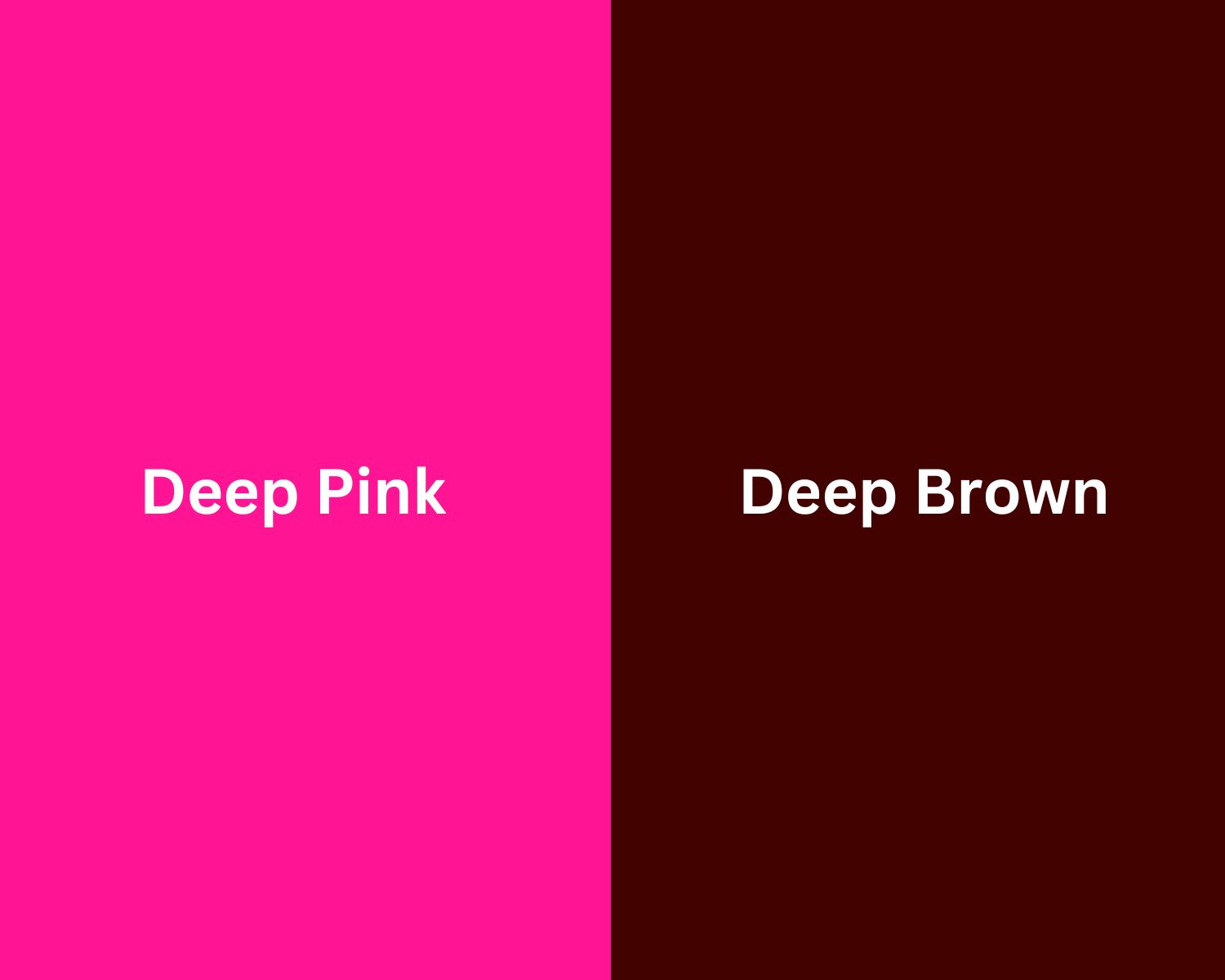Home>Lifestyle>The Truth About Pink Shirts: Breaking Gender Stereotypes


Lifestyle
The Truth About Pink Shirts: Breaking Gender Stereotypes
Published: February 14, 2024
Discover the truth about pink shirts and how they challenge gender stereotypes. Explore the impact on lifestyle and fashion choices.
(Many of the links in this article redirect to a specific reviewed product. Your purchase of these products through affiliate links helps to generate commission for Regretless.com, at no extra cost. Learn more)
Table of Contents
Introduction
Pink shirts have long been associated with femininity, but their significance extends far beyond a mere color preference. The perception of pink shirts as exclusively feminine attire has perpetuated gender stereotypes, restricting individuals from embracing their true preferences. In recent years, there has been a compelling movement to challenge these perceptions, encouraging people of all genders to embrace the color pink without fear of judgment or ridicule. This shift represents a powerful step towards gender inclusivity and self-expression.
The evolution of societal attitudes towards pink shirts reflects a broader cultural shift in how we perceive gender and self-expression. By delving into the history of pink shirts, the gendering of colors, and the impact of breaking gender stereotypes, we can gain a deeper understanding of the significance of this seemingly simple article of clothing. Let's explore the truth about pink shirts and the profound impact they have on our perceptions of gender and self-identity.
The History of Pink Shirts
The history of pink shirts is a fascinating journey that sheds light on the ever-evolving perceptions of color and gender. The origins of pink as a color associated with femininity can be traced back to the 18th century in Europe. During this period, pastel colors, including pink, were commonly utilized in traditional baby clothing, regardless of the baby's gender. Interestingly, pink was not exclusively linked to girls, and blue was not solely associated with boys during this era.
In fact, the gender-specific association of pink and blue only began to solidify in the early 20th century. It was not until the 1940s that the concept of gender-specific colors gained prominence in the United States. Advertisements and societal norms played a pivotal role in reinforcing the idea that pink was exclusively for girls, while blue was designated for boys. This shift in perception marked the beginning of the gendering of colors, including the iconic pink shirt.
The 20th century witnessed a significant transformation in the fashion industry, with pink shirts becoming a symbol of femininity and elegance. However, it is essential to recognize that the association of pink with femininity was not a universal concept. In some cultures, pink was historically associated with masculinity and strength, showcasing the fluidity of color symbolism across different societies and time periods.
As societal attitudes continued to evolve, the 21st century saw a gradual shift towards challenging traditional gender norms. This shift has led to a reclamation of pink as a color that transcends gender boundaries. Individuals of all genders have embraced pink shirts as a form of self-expression, breaking free from the constraints of outdated gender stereotypes.
The history of pink shirts serves as a powerful reminder of the dynamic nature of cultural perceptions and the potential for positive change. By understanding the historical context of pink as a gendered color, we can appreciate the significance of challenging and reshaping these perceptions in a modern context. The journey of pink shirts reflects the broader societal journey towards gender inclusivity and the celebration of diverse forms of self-expression.
The Gendering of Colors
The gendering of colors, particularly the association of pink with femininity and blue with masculinity, has been deeply ingrained in societal norms for decades. This phenomenon, which gained prominence in the early 20th century, has significantly influenced the way we perceive and categorize colors based on gender. The gender-specific color association was not inherent but rather a construct shaped by historical, cultural, and commercial influences.
During the 1940s, marketing and advertising campaigns played a pivotal role in solidifying the idea of gender-specific colors. Advertisements for children's clothing, toys, and other products began to emphasize the distinction between pink for girls and blue for boys. This deliberate marketing strategy aimed to create a clear demarcation between genders, reinforcing the notion that certain colors were inherently linked to specific sexes. As a result, the color pink became synonymous with femininity, nurturing, and delicacy, while blue was associated with strength, masculinity, and assertiveness.
The impact of these marketing efforts extended beyond consumer products, permeating societal attitudes and influencing cultural norms. The gendering of colors became deeply entrenched in popular consciousness, shaping the way individuals perceived and interacted with colors in their daily lives. This phenomenon not only affected fashion choices but also extended to interior design, branding, and various forms of visual expression.
However, as societal attitudes continue to evolve, there has been a notable shift in challenging these traditional color associations. The 21st century has witnessed a growing movement towards gender inclusivity and the rejection of rigid gender norms, including the arbitrary assignment of colors based on gender. This shift has led to a reevaluation of the gendering of colors, encouraging individuals to embrace a more fluid and inclusive approach to color expression.
The evolving attitudes towards the gendering of colors have paved the way for a more expansive and diverse understanding of color symbolism. Pink, once confined to a narrow definition of femininity, is now being reclaimed as a color that transcends traditional gender boundaries. This reclamation represents a broader societal shift towards embracing individuality and self-expression, free from the constraints of outdated gender stereotypes.
In essence, the gendering of colors, particularly the association of pink with femininity, reflects the dynamic interplay between historical influences, commercial agendas, and evolving cultural attitudes. By recognizing and challenging the gendering of colors, we can foster a more inclusive and open-minded approach to color expression, empowering individuals to embrace their unique preferences without the limitations of outdated gender norms.
Breaking Gender Stereotypes
Breaking gender stereotypes is a fundamental aspect of the evolving societal landscape, and the redefinition of pink shirts plays a pivotal role in this transformative process. The traditional association of pink with femininity and the subsequent stigmatization of men wearing pink shirts exemplify the deeply ingrained gender stereotypes that have permeated various aspects of daily life. However, the movement to break these stereotypes has gained momentum, challenging preconceived notions and fostering a more inclusive and diverse understanding of self-expression.
The act of wearing a pink shirt, particularly for men, has become a powerful statement against the constraints of gender norms. It symbolizes a rejection of the arbitrary limitations placed on individuals based on their gender, encouraging a more fluid and liberated approach to personal style. By embracing pink shirts, individuals are asserting their autonomy and defying the rigid expectations imposed by societal constructs.
Furthermore, the breaking of gender stereotypes extends beyond personal fashion choices; it represents a broader cultural shift towards dismantling the barriers that restrict self-expression. This movement advocates for a world where color preferences are not dictated by gender, but rather by personal taste and individuality. It celebrates the freedom to express oneself authentically, irrespective of societal expectations or traditional gender norms.
The reclamation of pink shirts as a symbol of gender inclusivity transcends the realm of fashion, serving as a catalyst for meaningful conversations about equality and self-empowerment. It fosters an environment where individuals are encouraged to embrace their unique identities without fear of judgment or prejudice. This paradigm shift challenges the notion that certain colors are inherently tied to specific genders, paving the way for a more inclusive and empathetic society.
As the movement to break gender stereotypes gains momentum, it is essential to recognize the profound impact it has on shaping a more equitable and open-minded world. By embracing pink shirts as a symbol of defiance against gender norms, individuals are contributing to a larger cultural narrative that celebrates diversity, individuality, and the freedom to express oneself authentically. This transformation represents a significant step towards creating a society where self-expression is celebrated without the constraints of gender stereotypes.
The Impact of Pink Shirts
The impact of pink shirts extends far beyond the realm of fashion, transcending traditional perceptions and fostering a profound cultural shift. By reclaiming pink as a color that transcends gender boundaries, individuals have sparked a movement that challenges deeply ingrained stereotypes and promotes inclusivity.
One of the most significant impacts of embracing pink shirts is the empowerment of individuals to express their authentic selves without the constraints of gender norms. This cultural shift has created a space where personal style is not dictated by societal expectations, but rather by individual preference and identity. By embracing pink shirts, individuals are making a bold statement against the limitations imposed by traditional gender norms, paving the way for a more inclusive and diverse understanding of self-expression.
Furthermore, the impact of pink shirts resonates beyond personal fashion choices, influencing broader conversations about equality and self-empowerment. The reclamation of pink as a gender-inclusive color symbolizes a collective rejection of arbitrary limitations based on gender, fostering an environment where individuals are encouraged to embrace their unique identities without fear of judgment or prejudice. This movement serves as a catalyst for meaningful discussions about dismantling gender stereotypes and promoting a more empathetic and open-minded society.
Additionally, the impact of pink shirts extends to the cultural narrative surrounding color symbolism and gender inclusivity. By challenging the traditional association of pink with femininity, individuals are contributing to a larger societal shift that celebrates diversity and individuality. The redefinition of pink shirts as a symbol of defiance against gender norms has the potential to shape a more equitable and liberated world, where self-expression is celebrated without the constraints of outdated perceptions.
In essence, the impact of pink shirts transcends the boundaries of fashion, representing a transformative cultural movement towards gender inclusivity and self-expression. By embracing pink as a color that defies traditional gender norms, individuals are contributing to a broader narrative that celebrates diversity, equality, and the freedom to express oneself authentically. This paradigm shift signifies a significant step towards creating a society where color preferences are not bound by gender, but rather by the celebration of individuality and personal expression.
Conclusion
In conclusion, the truth about pink shirts transcends the confines of fashion and color preferences, representing a profound cultural narrative that challenges gender stereotypes and fosters inclusivity. The historical journey of pink shirts, from its neutral origins to the gender-specific associations, reflects the dynamic evolution of societal attitudes towards color and gender. The gendering of colors, particularly the association of pink with femininity, has been deeply ingrained in cultural norms, shaping the way individuals perceive and interact with colors based on gender.
However, the movement to break gender stereotypes has redefined the significance of pink shirts, empowering individuals to embrace the color without fear of judgment or societal constraints. The act of wearing a pink shirt, particularly for men, has become a symbol of defiance against the limitations imposed by traditional gender norms, fostering a more inclusive and diverse understanding of self-expression. This cultural shift has sparked meaningful conversations about equality, individuality, and the freedom to express oneself authentically, irrespective of societal expectations.
The impact of embracing pink shirts extends beyond personal fashion choices, influencing broader discussions about dismantling gender stereotypes and promoting a more empathetic and open-minded society. By reclaiming pink as a gender-inclusive color, individuals are contributing to a larger cultural narrative that celebrates diversity and challenges outdated perceptions. This transformative movement signifies a significant step towards creating a society where color preferences are not bound by gender, but rather by the celebration of individuality and personal expression.
In essence, the truth about pink shirts signifies a powerful shift in cultural attitudes, reflecting a collective reclamation of self-expression and a rejection of arbitrary limitations based on gender. By embracing pink shirts, individuals are shaping a more equitable and liberated world, where the celebration of diversity and the freedom to express oneself authentically take precedence over outdated gender norms. The journey of pink shirts serves as a testament to the resilience of human expression and the transformative power of challenging societal expectations.














